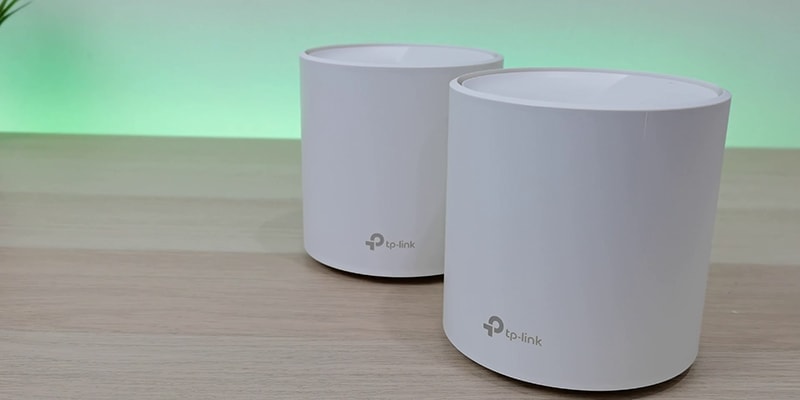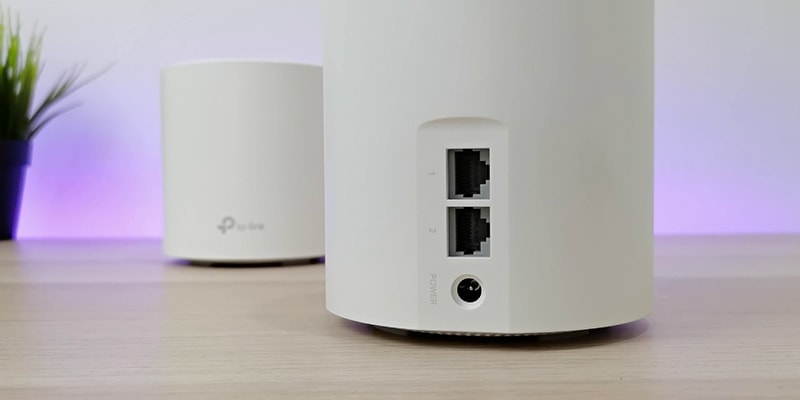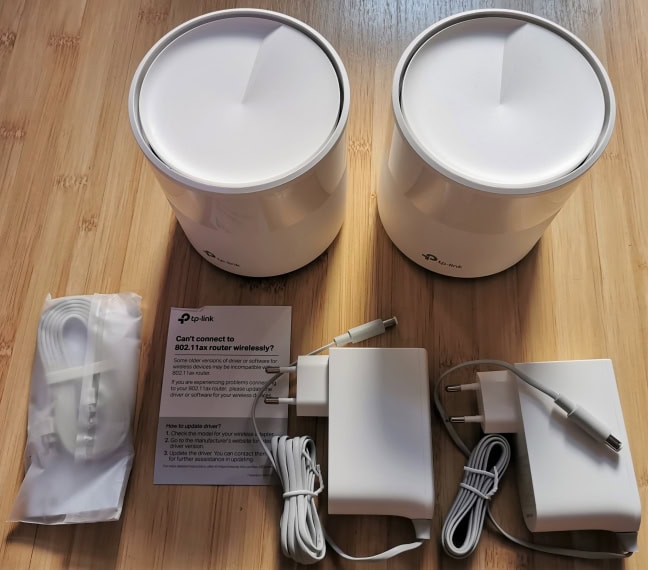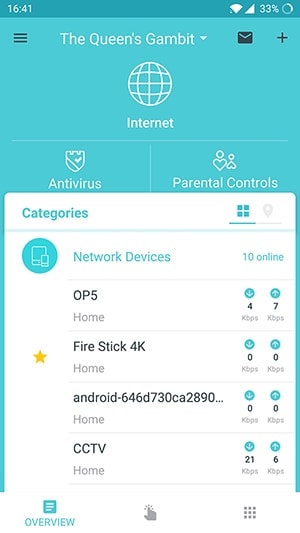What Is Mesh Wi-Fi and How Does It Work? All the Details

Struggling with Wi-Fi dead zones or patchy internet in your home? Traditional single-router systems often fall short in large or multi-story spaces, leaving rooms with weak or no signal. Mesh Wi-Fi offers a smarter solution by blanket-covering your entire home with strong, reliable connectivity.
Unlike standard setups or extenders that can create inconsistent connections, mesh Wi-Fi uses multiple devices, or nodes, working together to form a unified network.
Perfect for homes filled with smart devices or families streaming 4K content, this modern system ensures seamless performance without the frustration of dropped connections.
Core Concept and Technology
Unlike conventional Wi-Fi setups that depend on a single router to broadcast signals, a mesh network uses multiple nodes that work collaboratively. These nodes communicate with each other to ensure that every corner of your home receives a strong and reliable signal.
Instead of separate networks with different names or passwords for various devices, mesh Wi-Fi creates a unified network under one SSID (network name). This ensures that users experience uninterrupted connectivity when moving from one room to another, as their devices automatically switch to the strongest available node without manual intervention.
This interconnected structure eliminates the traditional weaknesses of standalone routers or extenders, which can suffer from signal degradation and uneven performance. By distributing Wi-Fi more evenly and dynamically, mesh networks provide an optimal solution for modern households.
How Mesh Wi-Fi Operates
The effectiveness of mesh Wi-Fi lies in the way its nodes communicate and adapt. Each node in the network doesn’t just connect to the primary router; it also connects to the others, forming a robust web of connections.
This means that if one node encounters an issue or becomes disconnected, the network dynamically routes the signal through alternate pathways to maintain uninterrupted service. This feature, known as self-healing, ensures the network’s resilience.
Another key feature is dynamic routing, which allows the mesh system to automatically select the fastest and most efficient path for data transmission at any given time. This means that regardless of where you are in your home, the system ensures that your devices are always connected via the optimal route, minimizing signal loss and latency.
The concept of backhaul is central to how mesh Wi-Fi operates. Backhaul refers to the connection between nodes that carries data back to the primary router.
It can be established wirelessly or through wired connections like Ethernet. Some mesh systems use a dedicated wireless band for backhaul, ensuring it doesn’t interfere with the data being transmitted to your devices, further enhancing speed and reliability.
Key Components
A mesh Wi-Fi system is made up of two primary components: a central router node and one or more satellite nodes. The central router node is connected directly to your modem, serving as the hub through which internet access flows into your network.
Satellite nodes are placed at strategic points throughout your home to extend coverage. These nodes communicate with the central router and with each other, distributing the signal seamlessly across your space.
Mesh systems are designed to work with most existing modems provided by internet service providers (ISPs). As a result, they can be easily integrated into your current setup.
With user-friendly apps and guided instructions, the installation process is straightforward, allowing you to configure the network, manage devices, and even test the signal strength for optimal node placement.
Benefits Over Traditional Wi-Fi Systems

Mesh Wi-Fi has quickly earned a reputation for being one of the most effective solutions to modern connectivity challenges, particularly in homes where traditional routers fall short. Unlike standard Wi-Fi setups that rely on a single router or basic extenders, mesh systems use an interconnected network of nodes to provide even, reliable coverage across every corner of your space.
This approach isn’t just about eliminating dead zones, it also enhances performance, simplifies scaling as your needs grow, and optimizes user experience like never before.
Expanded Coverage
One of the primary reasons people turn to mesh Wi-Fi is its ability to provide seamless coverage across large or challenging environments. Traditional routers often struggle to penetrate through physical barriers such as thick walls, floors, or multi-story layouts.
This can lead to frustrating weak spots where devices struggle to maintain a stable connection or lose access altogether.
Mesh Wi-Fi systems solve this problem by using multiple nodes to blanket your home with consistent signals. Whether you’re in the basement, upstairs in a bedroom, or even outside on a patio, mesh technology ensures that you’ll enjoy a strong and reliable connection.
The nodes work together to distribute Wi-Fi evenly, adapting in real time to maximize coverage and deliver the best possible performance no matter where you are. This capability makes mesh networks ideal for larger homes, apartments with dense walls, or any layout where conventional routers fail to reach.
Enhanced Performance
More than just addressing coverage, mesh Wi-Fi tackles the issue of network performance head-on. In traditional setups, bottlenecks can occur when too many devices connect to a single router.
This often leads to slower speeds, increased congestion, and spotty service during high-usage periods. Mesh networks, however, manage this problem through smart features like band steering, device prioritization, and load balancing.
Band steering allows the system to direct devices to the optimal frequency band, typically either 2.4 GHz or 5 GHz, based on their usage needs and distance from the node. For example, devices close to a node can be moved to the faster 5 GHz band, while those further away are directed to the 2.4 GHz band for better reach.
This approach reduces congestion and ensures smoother performance across all connected devices.
Additionally, load balancing ensures that no single node becomes overwhelmed by traffic. The system automatically redistributes devices across nodes to maintain a steady and fast connection for everyone.
Many mesh systems also allow you to prioritize certain devices, such as laptops for remote work or consoles for gaming, ensuring they get the bandwidth they need during critical moments.
Simplified Scalability
As technology becomes more central to daily life, the number of connected devices in homes has grown dramatically. From smart TVs and security cameras to phones, laptops, and smart home devices, networks need to handle a wide array of connections without faltering. This is where the scalability of mesh Wi-Fi truly shines.
With traditional routers, upgrading or expanding coverage often involves complicated reconfigurations or adding signal extenders that can create inconsistencies in performance. Mesh systems, on the other hand, make it easy to scale as your needs change.
Adding a new node to your setup is typically as simple as plugging it in and pairing it through an app. Once connected, the new node becomes an integral part of the network, expanding coverage and improving performance without the need for advanced technical knowledge.
This flexibility makes mesh Wi-Fi future-proof for growing households, smart homes, or evolving needs. Whether you’re adding more devices or extending coverage to new areas, mesh systems adapt effortlessly to your circumstances, ensuring hassle-free upgrades and consistent performance.
Technical Considerations

While mesh Wi-Fi is celebrated for its ease of use and improved performance, there are important technical factors to consider before integrating it into your home network. These systems rely on specific technologies and features to deliver seamless connectivity, and understanding their operation can help you maximize their potential.
Backhaul Types
Backhaul refers to the communication link between nodes in a mesh Wi-Fi network. It is essentially the backbone of the system, ensuring that data moves efficiently between the primary router and satellite nodes.
Backhaul can be established through wireless or wired connections, and the choice between these methods affects both performance and flexibility.
Wireless backhaul is the most common configuration for mesh systems and typically relies on dual-band or tri-band technology. In dual-band mesh systems, the same frequency bands used to connect your devices are shared for backhaul communication, which can sometimes lead to reduced speed when the network is congested.
Tri-band systems, on the other hand, dedicate one band exclusively to backhaul, leaving the remaining bands free to serve connected devices. This setup significantly improves network performance, especially in environments with heavy internet usage or many connected devices.
Wired backhaul, achieved through Ethernet connections, provides a more reliable and faster alternative. By physically linking the nodes, you eliminate potential interference or signal degradation caused by wireless communication.
Wired backhaul is especially useful in homes or offices with Ethernet ports already in place, as it results in minimal latency and ensures maximum speed for all connected devices. However, implementing wired backhaul may require additional setup and infrastructure, which can be less convenient for some users.
Standards & Protocols
Mesh Wi-Fi systems are built on wireless standards and protocols that allow them to deliver consistent, uninterrupted coverage. One significant feature of modern mesh systems is seamless roaming, enabled by protocols such as 802.11k, 802.11v, and 802.11r.
These technologies ensure that your devices can switch between nodes without experiencing interruptions or drops in connectivity. For instance, when you move from one room to another during a video call, these protocols allow your device to automatically connect to the nearest node with the strongest signal, maintaining a smooth experience.
Another consideration is the compatibility of your mesh Wi-Fi with the latest wireless standards. Systems that support Wi-Fi 6 or its successors, Wi-Fi 6E and Wi-Fi 7, offer substantial improvements in speed, capacity, and efficiency compared to older Wi-Fi generations.
Wi-Fi 6, for example, introduces features like higher throughput, better device handling, and improved battery life for connected devices, making it the preferred choice for busy households or smart homes. Wi-Fi 6E extends these benefits by utilizing the less crowded 6 GHz band, while Wi-Fi 7 promises to push performance even further with faster speeds and reduced latency.
Advanced Features
Modern mesh Wi-Fi systems also come equipped with advanced features designed to optimize performance and enhance the user experience. Multi-User Multiple Input Multiple Output (MU-MIMO) is one of these features, allowing the system to simultaneously handle multiple device connections without slowing down.
Instead of serving each device one at a time, MU-MIMO enables efficient data delivery to all supported devices, improving overall speed and responsiveness.
Beamforming is another technology integrated into many mesh systems. This feature focuses the Wi-Fi signal directly toward your devices rather than broadcasting it in all directions.
By concentrating the signal, beamforming enhances both speed and range, particularly for devices farther from the nodes.
Quality of Service (QoS) settings provide users with greater control over how bandwidth is allocated within the network. QoS allows you to prioritize specific devices or activities, such as video streaming, online gaming, or video conferencing, ensuring they receive the bandwidth necessary for optimal performance.
This feature is particularly useful in households with competing internet demands, as it prevents network congestion and minimizes disruptions during critical tasks.
Implementation and Use Cases

Mesh Wi-Fi systems are designed to be user-friendly and versatile, which makes them appealing for a wide array of applications. Their straightforward setup process, impressive adaptability, and ability to handle complex network demands have made them increasingly popular with households and offices alike.
However, like any technology, they come with certain limitations that need to be weighed.
Setup Process
Setting up a mesh Wi-Fi system is simpler than it may initially appear, thanks to intuitive app-based configuration tools offered by most manufacturers. The process typically starts by connecting the primary router node to your existing modem.
From there, additional satellite nodes are placed strategically throughout your home to ensure maximum coverage. The companion app guides you step by step, including recommendations for optimal node placement based on signal strength.
Node placement plays a critical role in ensuring smooth and consistent connectivity. Nodes should ideally be placed in open areas and within reasonable proximity to each other to maintain a strong link.
For larger homes or properties with challenging layouts, testing the coverage and experimenting with different placements can help fine-tune the network’s performance.
Once the nodes are placed and paired, the app allows you to test the network’s performance, check for dead zones, and make adjustments as needed. Many systems also let you monitor connected devices, manage parental controls, and adjust advanced settings directly from the app, adding an extra layer of convenience.
Ideal Scenarios
Mesh Wi-Fi systems excel in situations where traditional single-router setups struggle to deliver consistent coverage and performance. They are particularly well-suited for smart homes, which often feature a variety of connected devices, such as smart thermostats, cameras, and speakers, spread throughout the property.
The ability of mesh networks to support multiple connections without lag ensures that all devices perform as intended.
For households reliant on high-bandwidth activities, such as 4K streaming or online gaming, mesh Wi-Fi provides the stability and speeds needed for these demanding tasks. Buffering and dropped connections are less likely, even when multiple people are streaming content or gaming simultaneously in different rooms.
Remote work is another area where mesh systems shine. A reliable internet connection is essential for virtual meetings, accessing cloud-based tools, and transferring large files.
With uninterrupted coverage across the home, you can work from any room, or even the backyard, and still enjoy strong, stable Wi-Fi.
Additionally, mesh Wi-Fi is ideal for environments with a high density of connected devices. Whether it’s a household of tech enthusiasts or a family with multiple smartphones, tablets, gaming consoles, and smart TVs, the load-balancing capabilities of mesh networks help prevent congestion and ensure all devices perform optimally.
Limitations to Consider
While mesh Wi-Fi offers numerous benefits, there are a few limitations that users should be aware of. One of the most notable is the higher upfront cost compared to traditional routers or even basic range extenders.
Mesh systems often require an investment in multiple nodes, which can make them more expensive initially. However, this cost is often justified by the long-term benefits in performance and reliability.
Another consideration is the potential for minor latency in multi-hop setups, where data is transmitted through multiple nodes before reaching the primary router. While modern systems aim to minimize this, it may still affect very latency-sensitive activities, such as competitive online gaming, if the nodes are not optimally placed.
Brand compatibility is also a factor to keep in mind. Many mesh Wi-Fi systems are designed to work exclusively with nodes from the same brand and model series, limiting your ability to mix and match.
This means expanding your network in the future will likely involve sticking with the same manufacturer, which could influence your purchasing decisions.
Despite these limitations, mesh Wi-Fi remains a leading choice for households and small businesses seeking a solution to connectivity challenges. Its ease of deployment, dependable performance, and scalability make it a worthwhile investment for transforming how you experience the internet across your space.
Conclusion
Mesh Wi-Fi presents a sophisticated yet user-friendly solution for solving the challenges of patchy connectivity and poor performance in larger or more complex spaces. By combining expanded coverage, smart features, and adaptability, these systems outshine traditional routers and extenders, delivering consistent internet access wherever it’s needed.
Whether supporting high-bandwidth activities like 4K streaming, powering smart homes, or enabling remote work, mesh Wi-Fi provides the reliability and flexibility modern households demand.
While it does involve a higher initial investment and some technical considerations, the benefits of seamless performance, simplified scalability, and advanced features make it a worthwhile choice for future-proofing your network. For anyone seeking a smoother, more dependable internet experience across an entire home or office, mesh Wi-Fi offers an efficient path forward.


